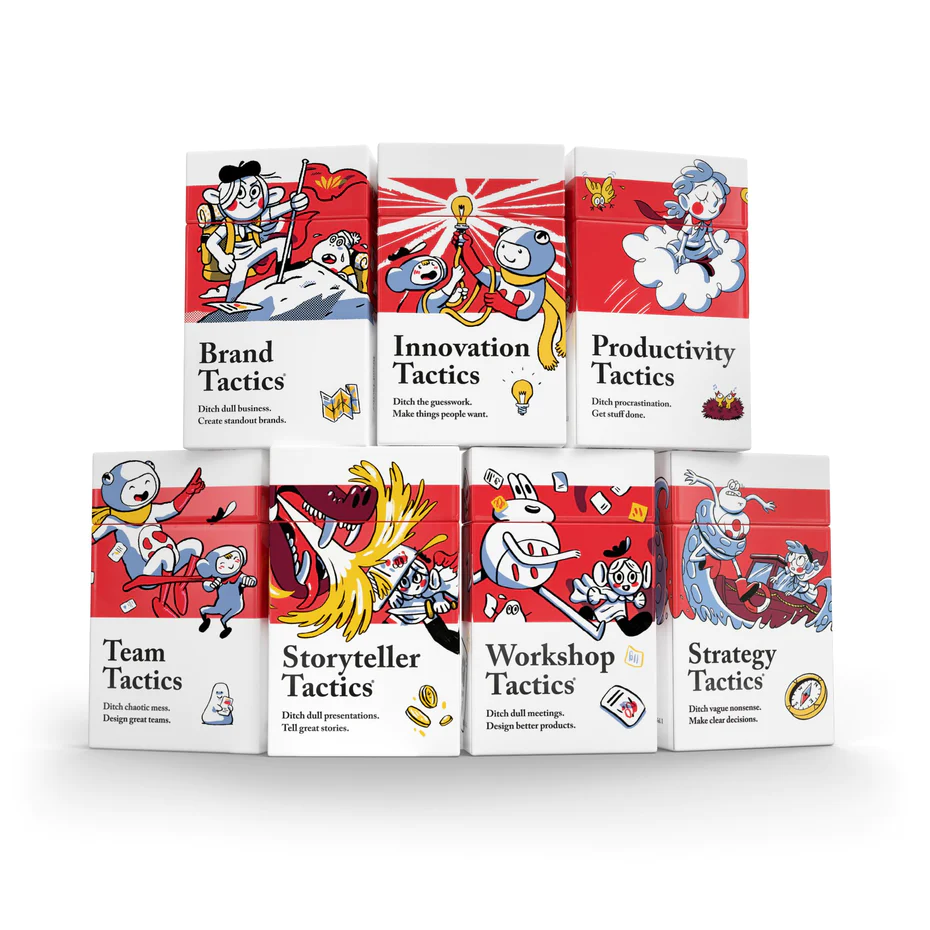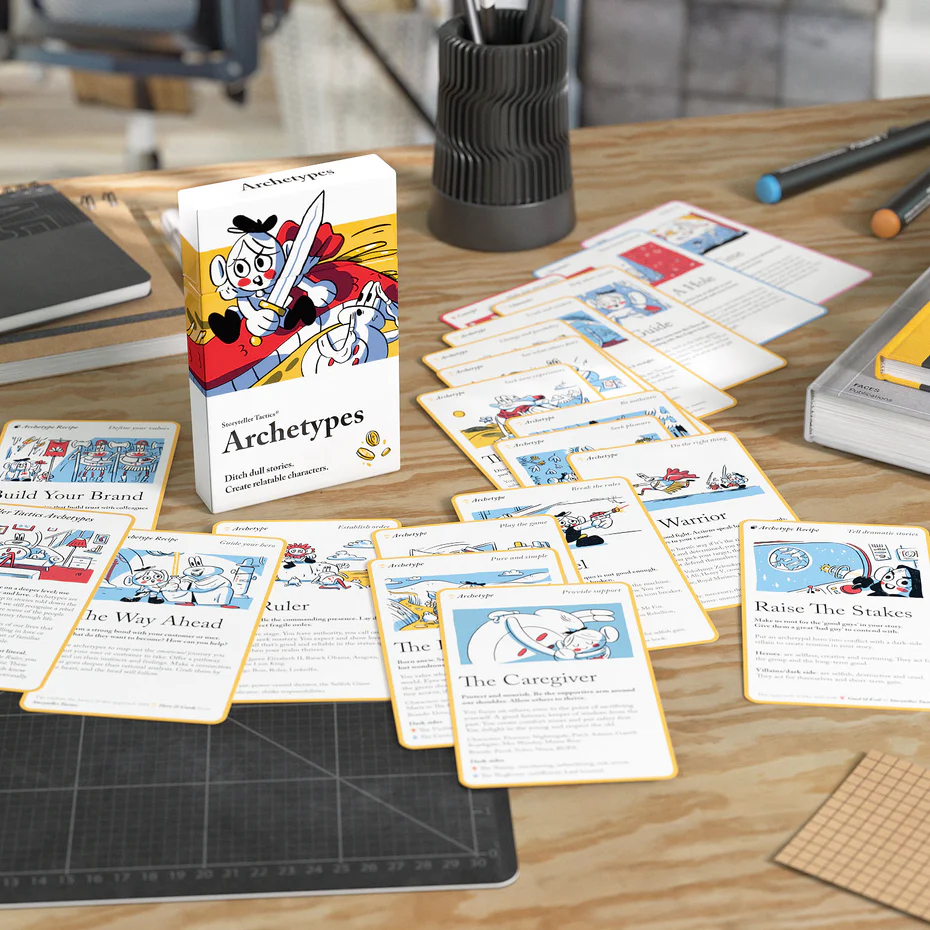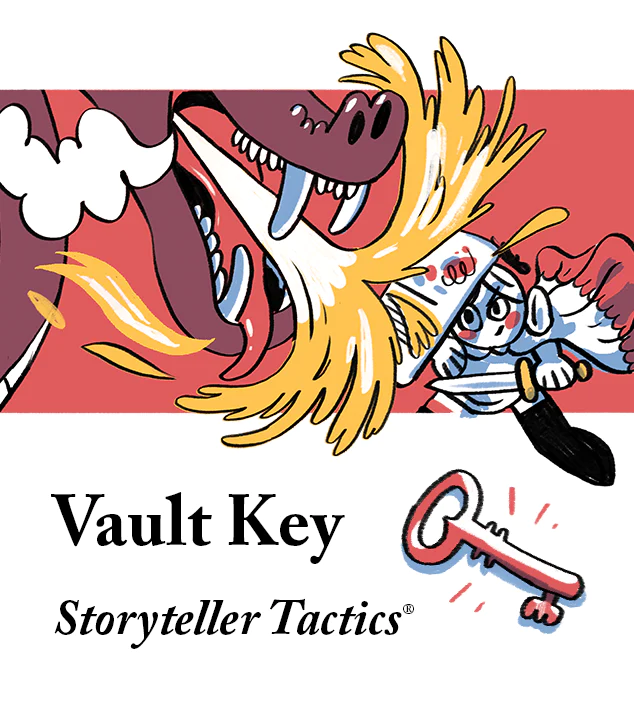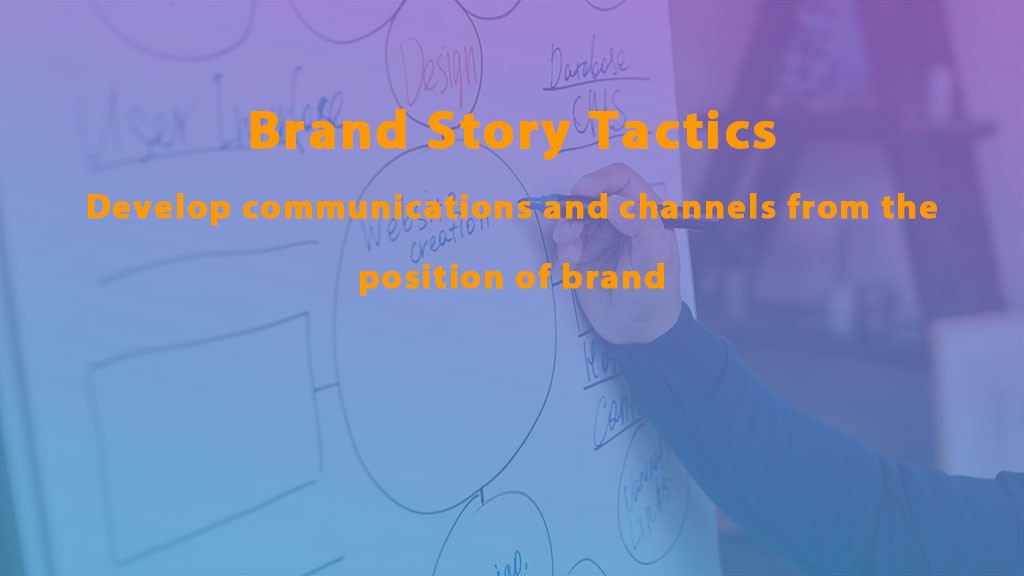Storyteller Tactics Pip Deck Reviewed
Are the Storytelling Tactics cards by Steve Rawling any good? I’ll give my experience showing how I use the cards to impact creative marketing and advertising content. Read on to see the storyteller tactics pip deck reviewed.
You might have seen these decks promoted on Instagram, Facebook, and other platforms and wondered if they are any good… Well, I’ve been using Storyteller Tactics for a few months now, and I have a background in brand storytelling and new service/product development. To help you get a sense of whether the Storyteller Tactics deck can help you, I’ll share some of my experience and talk about where these decks fit in with the larger field of brand development, pitching, selling, and storytelling in general.
I’ll also share an affiliate link, so that if this information is helpful, you can get your deck, contribute something back here (I receive a small commission on each sale), AND get at 15% discount on your purchase.
So, here it is – the good the bad and the ugly…
What are Pip Decks?
Each Pip Deck is a set of cards that blend process with activity prompts laid out in a choose-your-own-adventure format. Basically, as your scenario changes, so can your use of the deck. Topics include storyteller tactics (reviewed here), idea tactics, workshop tactics, team tactics and laws of user experience (UX).
To see the full set of decks, click the image above (yes, it is an affiliate link).
The Storyteller Tactics deck is a set of 54 storytelling cards that are broken down into manageable story elements.
The deck is built to influence, educate, build awareness, lead – to basically attain all the big objectives businesses struggle with on a day to day basis – through powerful, well-placed stories.
Storyteller Tactics:
- a “storytelling system” to help identify what elements to develop based on where you are at in the story development journey
- “recipes,” which focus on your story objective (sell, motivate, inspire, explain, and so forth);
- “concepts” which are framing conventions – are you on a heroic journey, are you trying to solve a puzzle or mystery, or are you trying to balance order and chaos to make difficult things more manageable, or boring things more exciting?
- “exploration,” which is about getting the information you need to tell your story, whether through interviews, working together, or by some other means
- “character” cards that focus on roles – are you an expert? Is your customer the hero and you the guide?
- “function” cards that help you position your story in relation to what you are doing – pitching, selling, hunting for business insights and the like.
“structure” which digs into story arc options - “style” has to do with how you tell your story – what you put forward and what you hold back.
- and last, but not least, “organize.” A set of cards focused on how to collect and utilize stories over time.
Storyteller Tactics Pip Deck Reviewed
At a top level, I really like the Storyteller Tactics Pip Deck. It consolidates a vast range of knowledge into quickly digestible bites, and when a card is helpful for your situation you can simply follow the card from front to back, top to bottom and jot down your notes. In my experience just that process adds some new thinking.
I also like the artwork on the cards. It is playful and each image quickly conveys the idea of the card without driving the narrative in one direction or another. They are specific enough to communicate, but general enough the viewer can project their own scenario into the story. In that way, the artwork is like the original storytelling deck: the Tarot. (More on that in future posts.)
The images are also quite playful. That’s an important idea in design thinking – we are most creative when at play. Some problems are so big that everyone freezes up and reverts to reactive thinking. By opening up an element of playfulness through the imagery, the cards subtly remind us that if we feel stuck, to work fast, throw ideas at the wall, and let the insights and story elements help us out of the situation we are in.
How do you use the Storyteller Tactics cards?
At its heart, the main purpose of the storyteller deck is to help you identify and tell the right story – when a story is necessary.
I work with a lot of individuals in the finance and lending industry to transform their work into story-based marketing and advertising content.
When I talk with clients they get excited about interest rates, FICO scores, documenting loan requests with additional notes, and the number of days available to vet a prospective borrower. Great – but all of that is commodity thinking when it comes to the client’s perspective. Cheerios or Joe’s O’s (Trader Joe’s brand Cheerios) – same ingredients, same shape. An undifferentiated product is a commodity My choice of “brand” has to be based on something else.
You’ll hear the same finance conversation, so long as you are speaking with a real professional in the industry, but none of that “loan talk” motivates a business borrower. In fact, it makes most business owners feel like they don’t matter at all in comparison to the interest accrued by the bank on the deal.
What are some stories that could change this perception? Well, maybe talking with a banker doesn’t give me the heart of the story.
If everyone I talk to in a business category tells me the same thing, I can use my Storyteller Tactics “explore” cards to find other approaches to the story. Maybe I start to interview small business owners that were able to get out of a leasing cycle, buy retail property and reinvest in a long-term real estate asset.
The story might not all be roses and cream – it’s still hard work running a business, but maybe the asset has given them choices, like using their owner equity in the property to secure a low-interest asset-backed line of credit that allows them to be more responsive to customer requests.
If I can put that story on my client’s website new visitors can start to see themselves in the story. They might imagine their own “reasons why” getting their own commercial property loan could benefit them over time. Beyond that, if my financial services client is willing to make additional commitments like fast loan approvals or a high level of service throughout the loan process, we are beginning to get beyond the commodity and starting to build a brand.
Without a storytelling system you could be stuck thumbing through the client’s brand book with their logo, color scheme, fonts, mission and values and samples of last year’s ads and social media posts and end up repeating messaging the client has already been using. As a marketer or designer, that’s just providing labor, not advancing the creative messaging in a way that advances the client’s position.
Of course, once I have an insight that could become the heart of a story I need to structure the story and break the story into parts that can be told through various media. That’s when I work through the other topics and identify what elements from each topic will enhance the story.
…but not all products need a story. Generic iodized salt doesn’t need a story. It costs less because it’s the same as the name brand but without the marketing costs added on top.
When is it necessary to tell a story?
Steve Rawling, former TV journalist, current brand story facilitator, and author of the Storyteller Tactics deck says that storytelling is best used when combining facts, emotions, and a narrative arc results in a better understanding of what you are trying to convey than any one of these alone.
The reason that brand storytelling has taken off in businesses around the globe is that spreadsheets, bullet points, key performance metrics, and pressure to perform only get you so far. In fact, they often create burnout. People lose the “why” behind the objective. Yes, money, but what else?
A story, in such circumstances, can demonstrate why an efficiency initiative serves clients and helps them have a better life. Or why revisiting an historical way of doing something might have merit in today’s digital economy.
So, are the Storyteller Tactics good at what they do?
On the whole, yes! I’ve used the cards to outline presentations to City Council meetings to motivate change, with business clients that are stuck in a single narrative that fails to resonate with their clients, and while outlining fundraising campaigns for nonprofit organizations.
But, of course, there is opportunity to grow. For example, in the “character” set of cards, not all of the cards demonstrate characters. The cards do represent the primary roles that businesses take in relation to customers – either the expert that provides information or solves problems or the guide that helps the hero (customer) along their journey.
A protagonist usually has a foil who counters them or helps them grow and change in some significant way. There’s also often a villain, someone or something the hero works against. The villain character is represented in some of the “concept” cards, but with such an important role, it would make sense to have a card dedicated to outlining how these other characters play their parts in the story arc. Other characters add flavor and context.
In a business context, this rich, dynamic tapestry of characters may be too complex, bogging down your story for audiences used to bullet points and metrics, so it makes sense that the full range of characters would be reduced in this deck.
Where does the Storyteller Tactics deck perform the strongest?
The Storyteller Tactics deck is excellent when you need to prepare a presentation, motivational speech, sales pitch, marketing asset, or advertisement and you need to break out of the standard set of ideas in your industry. The deck will help you approach your story in new ways and provide the prompts to discover new insights you can turn into strategic advantage.
Where would you need added resources to enhance your Storyteller Tactics deck?
If you were working on a character-driven book or film script you would need more in terms of the development of multiple characters that interact with one another. You probably would need more in terms of developing plot points to move a larger narrative forward. The Storyteller Tactics deck points toward that complex constellation in the sky but doesn’t map out where all the stars are that create the larger picture.
However, it’s important to recognize that long-form storytelling is not its goal of the Storyteller deck. It’s a tactical tool that helps you get ready fast when you need to prep your presentation for tomorrow, and your win or loss is going to be based on whether your audience really “feels” or “grocks” your position or not.
The deck can be used to consider your larger strategic position, but it doesn’t provide steps to help you plan “scenes” along the narrative arc of a larger story. Like supporting characters, scenes are implied, but not detailed in the deck.
How can I get the most out of my physical Pip Deck cards?
Pip Decks are part of a larger trend in design thinking, teamwork, brand, and sales development that has developed since the 1990’s. Yes, the cards can be used quickly to strengthen tomorrow’s presentation, AND getting the most out of the decks means developing some knowledge and experience in the varied disciplines that have led to the emergence of Pip Decks.
Steve and the team at Pip Decks provide a bank of videos and Miro boards (a digital team white boarding platform) that help individuals or teams work through the discovery process to strengthen stories. In addition to purchasing a physical deck, you can get perpetual access to the Vault, an evolving set of tools you can come back to again and again.
What’s included?
- PDF version of the Storyteller Tactics for offline access
- Drag and drop digital cards for digital whiteboards
- Miro / MURAL templates for each Tactic so you can get started fast.
- Storytelling Video Tutorials, featuring 50+ coaching videos from author Steve Rawling.
- Access to all future Storyteller Tactics exclusive content, events and discounts.
Want to deepen your ability to apply story tactics through your brand?
Sign up for Brand Story Tactics coaching to develop communications and channels from the position of brand.
Brand platforms tend to be developed, then slipped in a drawer or stored in a Dropbox folder but rarely used. Through one-on-one coaching, we will develop your communications platform and messaging keeping your brand position in mind. This a-la-carte option allows you to buy as many one-hour sessions as you need. In our first session, we will create an agenda and plot out a timeline for clarity and accountability on both sides.





